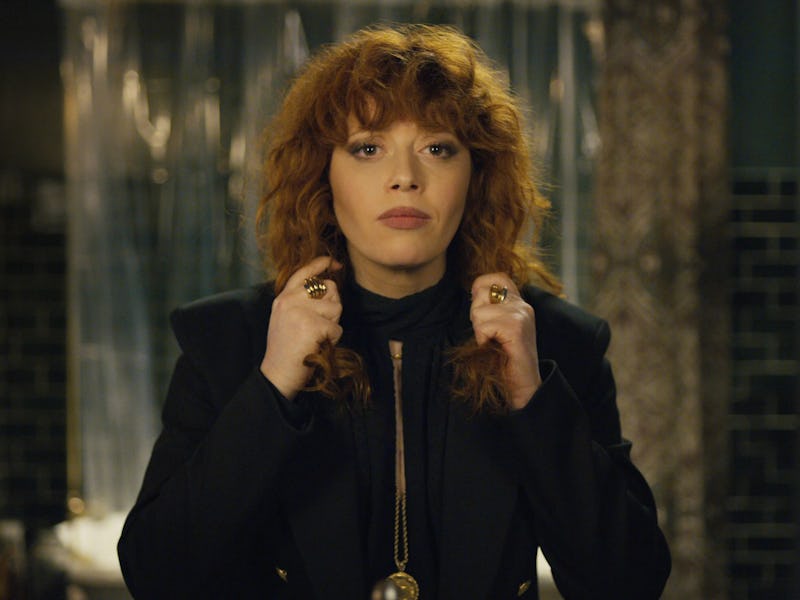Netflix’s Best Sci-Fi Show Saved the Tired Time-Loop Genre
Gotta get up, gotta get out...

The time-loop story is, fittingly, timeless. Whether it’s Bill Murray becoming a jazz piano natural in Groundhog Day, Tom Cruise slaying endless aliens in Edge of Tomorrow, or Andy Samberg and Cristin Milioti falling in love in Palm Springs, watching a character live the same day forever can be intoxicating.
But the novelty, both in-universe and out, can wear off fast, and finding new things to say and do in time-loop stories is getting increasingly difficult. Still, it’s not impossible: five years ago, Netflix’s best original series managed to revive the genre and infuse it with a sense of history, family, and community.
Russian Doll is the brainchild of actress and Netflix veteran Natasha Lyonne, Parks and Recreation star and producer Amy Poehler, and playwright-turned-showrunner Leslye Headland. It follows Nadia Volvokov, a game developer who finds herself repeating the night of her 36th birthday party. As she relives the same night over and over, she tries to determine the cause of this anomaly and winds up unpacking mysteries from her past.
Whenever Nadia dies, she wakes up in the same bathroom.
Directed by Leslye Headland and But I’m a Cheerleader director Jamie Babbit, Russian Doll’s style perfectly suits its substance. From the production design of the bathroom where Nadia keeps waking up, to the erratic shooting style that follows her as she attempts to find an explanation (or at least her favorite stray cat), the show feels as cool as the New York party she’s stuck in.
Adding to this is Lyonne’s performance of what is essentially a fictionalized version of herself. She growls her lines in a way that assumes a cigarette is hanging from her lips, and the ways she says “cock-a-roach” and “Thursday! What a concept!” are unforgettable. It was Lyonne’s idea to feature Harry Nilsson’s “Gotta Get Up” as the song that plays with every loop, a motif that evolves from a plot point to an ironically cheery reminder that nothing has changed.
But the highlight of Russian Doll is the story, a meandering journey about Nadia’s friends and family, the city of New York, and Charlie, the new friend she makes who’s also caught in the loop. Unlike many other time-loop stories, Russian Doll doesn’t get hung up on the loop’s rules. Nadia isn’t concerned about the how or why of her predicament; she just wants to move on with her life.
As the time loop begins to fray the edges of reality, all the fruit in Nadia’s local bodega rots.
Like her video game characters, she keeps respawning over and over to the point where the fabric of time itself begins to degrade. In each iteration, she learns a little more about herself and the world she lives in, leading her and Charlie to finally break out of the loop... at least until Season 2 begins.
Russian Doll uses its sci-fi conceit to paint a portrait of a complicated woman who prefers not to dwell on the past. But she has to live in it, over and over, all while falling down stairwells and being hit by taxis. Between these brutal restarts, she begins to appreciate the role the past plays in her life, and learns to treat it as something you can put behind you after you acknowledge it. The time loop has been used as a gimmick across genres, but Russian Doll turned it into something far greater than any plot device.